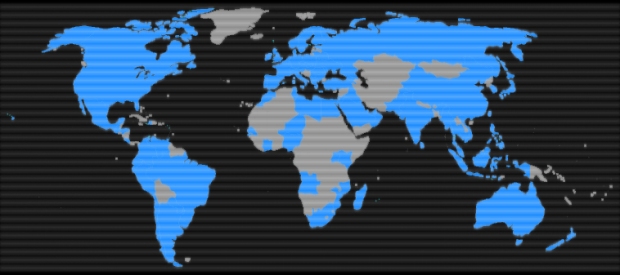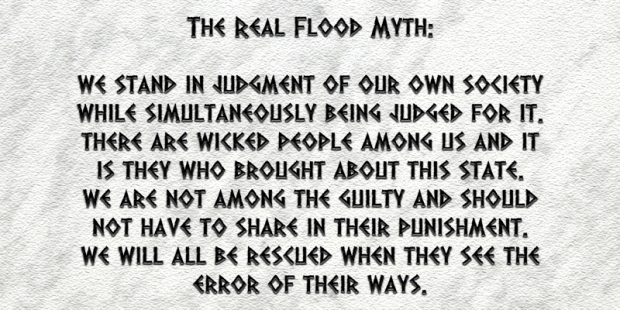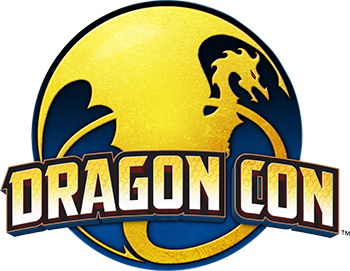Batman has been criticized for not doing enough and/or not doing the right things to truly help Gotham City. As the real world economy has grown since the character’s inception (May 1939) the character’s wealth has had to expand to maintain a sense of plausibility if not verisimilitude.
Forbes estimates the Wayne family fortune at $6.9 billion. And, while that’s not Bill Gates-rich, it would make Bruce Wayne roughly the 231st wealthiest person in the (real) world – just after David Geffen. A cost analysis indicates it would cost $200 million to start a career as the Dark Knight, just a little more than it takes to produce a film about him.
Batman’s enemies have from time to time suggested that he’s just as crazy as they are. Some of his detractors in the real world have voiced the opinion that Mr. Wayne is deliberately keeping Gotham poor. In his ScrewAttack! video, “Does Batman Need a New Origin??”, Bob Chipman (a.k.a. MovieBob) makes the case that the Wayne Foundation could do quite a bit more to alleviate poverty and other cause of crime than nightly patrols and subsequent kicking of ass seems to.

But that’s not the point —
The overarching Gotham mythos has become largely based on the concept that the human psyche is fragile enough that one bad day is all it might take to cause it to snap. While the comic went nearly three years before giving Batman much backstory. when it came the story hinged on trauma. In reaction to the death of his parents Master Wayne vowed to “avenge their deaths by spending the rest of my life warring on all criminals.” № 33 (Nov. 1939).
The Joker – undisputed king of the One Bad Day origin – did not appear until the following year and went on to make the trope the overt premise of “The Killing Joke” (1988). Anyone, the Clown Prince postulated, will go mad given enough provocation and that can be accomplished in a remarkably short period of time. In a sense, Bruce having been traumatized as a formative event gradually set a tone that nearly all of his opponents now follow.
Dragon Con. Sept. 3, 2016. 7:03ᴘᴍ —
I was wandering and exploring the event when I happened by a panel already in progress: Representing Disability and Trauma (in Comics). Daniel Amrhein (Journey into Awesome) was the moderator. Courtney Bliss (Bowling Green State University) and Kari Storla (USC Annenberg) were his guests.
There are a number of reasons that I chose to sit quietly in the back of the room. I was late, for one. Comics – not just Batman – have been an interest since at least the mid-70s. As an epileptic, it is sometimes easy for me to forget that I have a disability so I’ll take the opportunities of reminders in writing about them more properly when they appear. There have been a few events in my life that might technically count as trauma but I don’t often view them as such. I’ve had bad days. Who hasn’t? They didn’t make me snap.
There may be a manner in which the topics presented in the panel may be discussed without trigger warnings. We haven’t reached that stage of discourse as a society. One person did leave during the talk. A fairly wide range of life events were discussed as was the stigma that victims of traumatic experience face and, similarly, those who have disabilities. Life can be difficult enough but one of the very strong points made was that trauma or condition notwithstanding each human psyche moves on.
Toward the end of the panel, Ms. Storla made the point that mental illness, when presented in fiction, is far more often than not an oversimplified ‘sane + trauma = condition’ sort of formula. An insane character is defined by their condition without any other aspect of a personality being presented well – if at all. What the audience needs to know, authors presume, is the character in question is just crazy. Only crazy.
I’ve known at least one person who could be called “crazy”. That’s part of the personal trauma about which I’m being vague. No, I don’t mean myself. During lucid moments such people can be very aware that something is wrong – that their own behaviors are not preferable. They themselves may find certain of their words and deeds beyond both their control and comprehension. These are facets of their existence as human beings not the whole.
Mr. Amrhein observed that, “being hit on the head doesn’t make people leave riddles for Batman. Being shocked or dumped in chemicals doesn’t make someone ‘crazy’. Being burned with acid doesn’t result in dissociative identity disorder.”
I then asked the panelists that, if they were writing for ‘insane’ comic book characters, how would their approach be different. The moderator replied that rather than the reliance on outdated tropes he would like to introduce modern research and the views of experts. In his opinion – and he’s not wrong – many creators of comic books draw from preexisting canon and recycle it. This perpetuates the outmoded concepts and contributes toward perpetuating misunderstanding. Ms. Storla said she would want to bring in feminist trauma theory (which I’ll be reading up on).
Until this panel (and MovieBob’s video), I had viewed Batman’s adversaries as each presenting a facet of human obsession but that all of them represent an unfair and outdated model of a disordered psyche. Each is an exaggeration of the strengths and virtues of the Dark Knight – twisted in antisocial ways. All of this was – in the moment and lasting since – rich food for thought and a valued reminder to remain mindful with regard to characters who are out of their minds. We are stronger. We adapt. It’s part of human nature. It should be part of the characters we create.

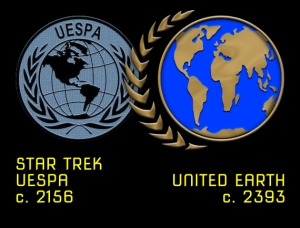

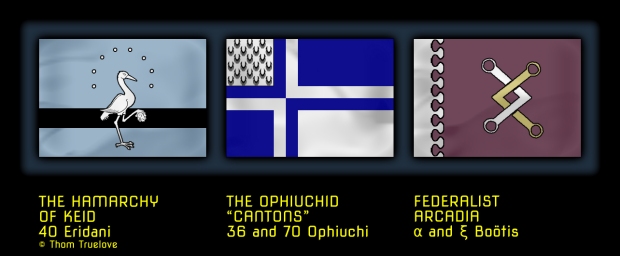

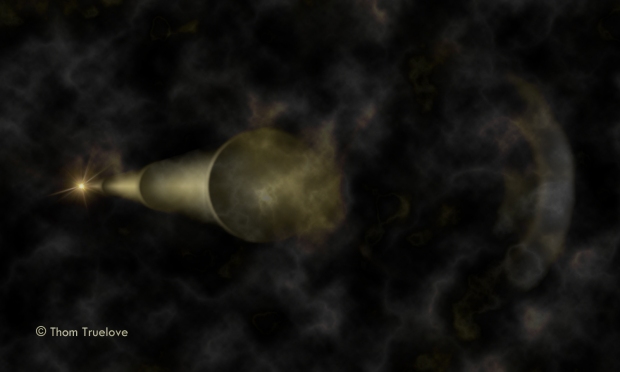

 Another Chinese maxim equates to, “While the cat’s away the mice will play.” But it’s more poetically transliterated as, “Heaven is high and the emperor is far away.” Strange new worlds will raise new ideologies and new approaches to the economic problem. The more distant and different the world the more likely influence of any kind from M.E. will be subject to a metaphorical inverse-square law.
Another Chinese maxim equates to, “While the cat’s away the mice will play.” But it’s more poetically transliterated as, “Heaven is high and the emperor is far away.” Strange new worlds will raise new ideologies and new approaches to the economic problem. The more distant and different the world the more likely influence of any kind from M.E. will be subject to a metaphorical inverse-square law.
 Whether it’s due to fear of aging and change or to any sense of being challenged by a woman this does have to change. “Strong female character” is not a description of a fictional person as it is the name of a problem. So I’ll be letting Carl Sagan graduate from Mt. Rushmore to Elysium – with Wrexie Leonard taking his place. She was the professional companion of Percival Lowell from about 1883 to 1916. She was a scientist in her own right and there’s no evidence she felt disappointed that she and Mr. Lowell never married or viewed life as she lived it as being tragic at the end.
Whether it’s due to fear of aging and change or to any sense of being challenged by a woman this does have to change. “Strong female character” is not a description of a fictional person as it is the name of a problem. So I’ll be letting Carl Sagan graduate from Mt. Rushmore to Elysium – with Wrexie Leonard taking his place. She was the professional companion of Percival Lowell from about 1883 to 1916. She was a scientist in her own right and there’s no evidence she felt disappointed that she and Mr. Lowell never married or viewed life as she lived it as being tragic at the end.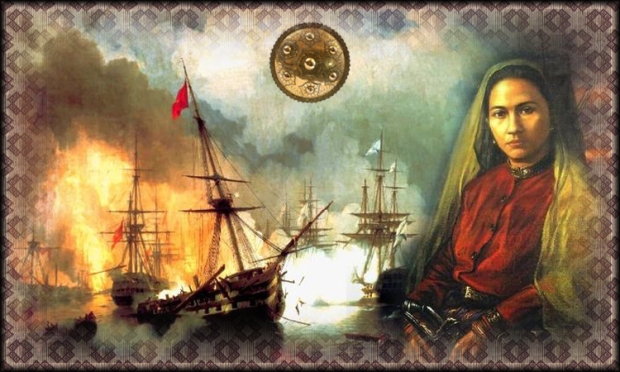


 One of my habits – bad or not – is a tendency toward complexity. In the late 80s my coworkers and I were asked to fill out the Myers–Briggs Type Indicator. It was not made a requirement, though some on the team viewed it as such. I was intrigued by the concept of sorting personality types into sixteen broad categories based on what seemed to be a relatively short questionnaire.
One of my habits – bad or not – is a tendency toward complexity. In the late 80s my coworkers and I were asked to fill out the Myers–Briggs Type Indicator. It was not made a requirement, though some on the team viewed it as such. I was intrigued by the concept of sorting personality types into sixteen broad categories based on what seemed to be a relatively short questionnaire.


